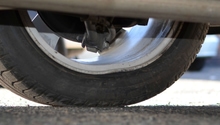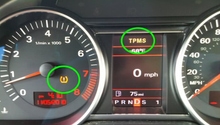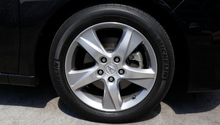Acura TSX: Why is My Tire Pressure Light On?
There’s nothing more annoying than having a warning light stuck on in your dashboard. One of the more common lights for TSX owners is the tire pressure sensor (TPMS). Here are some reasons why.
This article applies to the Acura TSX (2004-2014).
If the tire pressure sensor light is lit up on the dashboard in your TSX, the first thing you should do is check the air in your tires to ensure that they are all adequately inflated. The tire pressure monitor system (TPMS) will typically tell you which of the four tires is causing the warning, by flashing the tire in the pictograph of the car in the display. If after checking you are just left shrugging and looking for a piece of black tape, we can help. Read on and we'll help you figure out why that light is on.

Figure 1. This Acura is indicating an issue with the left rear tire. 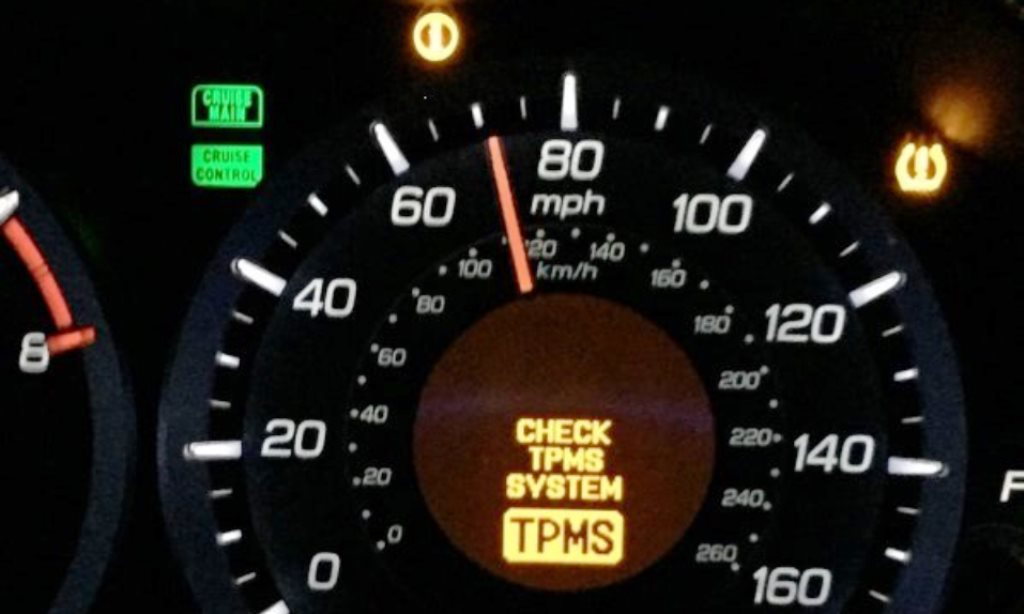
Figure 2. This warning means that the issue is not just a low tire, but the whole system is out of order.

Materials Needed
- Air tank
- Replacement TPMS sensors
Step 1 – Did the temperature suddenly drop?
The colder air can impact the tire's pressure.
This is an oft-overlooked issue. If you last checked the tire pressure when in summer, and now it is only 40 degrees, all four tires may suddenly read low. You lose about one pound of pressure for every 10 degree drop. The light will comes on when the tire pressure drops four pounds below the minimum recommended tire pressure. In this case, the TPMS is doing its job, and you should add air to the tires to get them back to the factory recommendation.

Step 2 – Are you at a different elevation than before?
The thinner air can impact how the tire's pressure.
A bit of a far reach, but if you moved to somewhere significantly higher or lower in elevation (say, you moved from Denver to Death Valley), this will impact the tire pressure. Tire pressure on your gauge, and as read by the TPMS, is relative pressure, compared to the surrounding atmosphere. Higher elevations have lower ambient pressure, so your tires will have more pressure in them, while driving to a lower elevation will make them read low.
For those curious, measure your tire pressure at the bottom of a mountain (with the tires already warmed up a 15 minute drive), and then again at the top. You could see as much as a 3PSI difference between the two, even taking into account the temperature of the tires. Always adjust your tire pressure for local elevations.
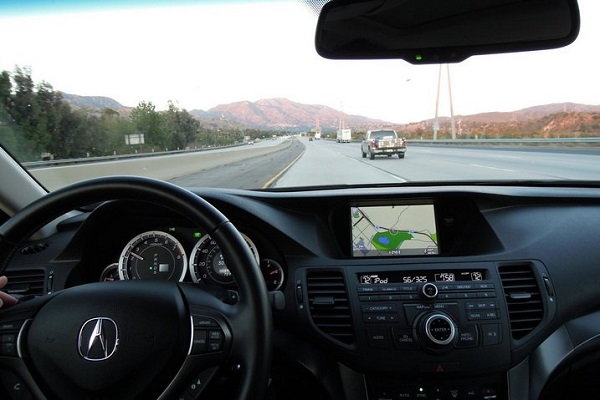
Step 3 – Did you just install new aftermarket wheels?
The new wheels may not jive with the car's existing technologies.
This is actually a pretty common issue. While aftermarket wheels might look great on a TSX, they can create a real technical headache when the system doesn't recognize them. If you're installing new wheels, you need to remove the old wheel's sensors, and replace in the new wheels. If you have done this, the computer is smart enough to pick up an variation in the wheels in the first few feet of driving. If you have had new TPMS sensor installed in the new wheels, the system should also pick them up and learn to read them with no problem, as long as they are the correct sensors.

Step 4 – How old are the TPMS sensors?
A battery inside the TPMS sensor may have died.
The sealed TPMS sensors in the wheels have a built in battery that can't be replaced. It is supposed to last at least five years, based on the average life of a tire. If you don't drive your car much, and your tires are now more than five years old, you may have a dead battery in one of them. Most tire shops now carry replacement TPMS and know to sell new ones with a set of tires to avoid having to un-mount new tires and change them somewhere in the middle of their tread life. This issue is usually indicated by the TPMS suddenly not able to give you a reading on one tire. Your tire shop can check with a handheld TPMS scanner at each tire.
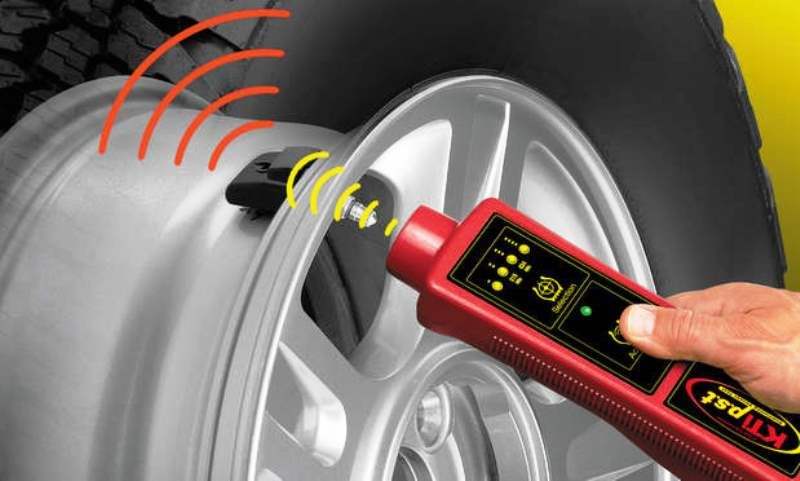
Step 5 – The receiver may be faulty
If the in wheel sensors are broadcasting, the receiver may be bad.
This one unfortunately is hard to check for the DIYer. There are small black boxes, typically one at the back and one at the front of the car, which receive the signals the wheel sensors put out. If one has gone bad, or gotten disconnected, you will lose the signal from two or even all four wheels. The only real solution is to have your local Acura dealer check this out for you.
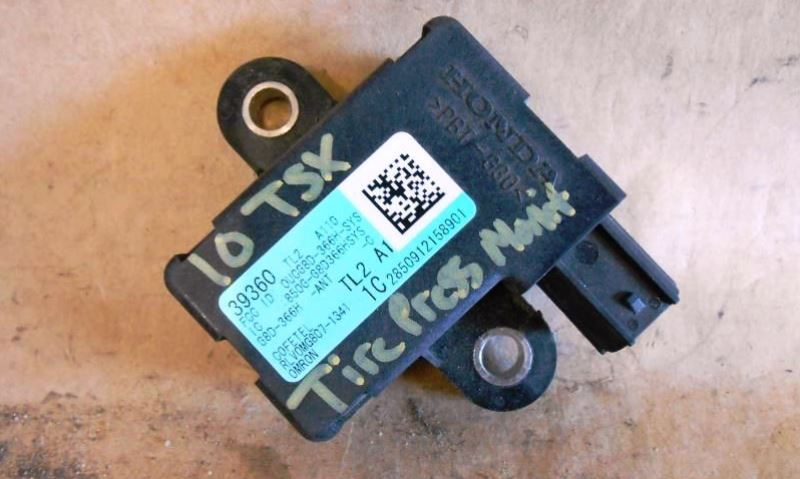
Related Discussions
- New wheels now TPMS problems - AcuraZine.com
- There way turn off TPMS - AcuraZine.com
- Reset TPS warning light - AcuraZine.com
- Tire pressure indicator light will not go off - AcuraZine.com
- Low tire pressure - AcuraZine.com
- TPMS error tire pressure monitoring system - AcuraZine.com
- How reset TPMS sensors - AcuraZine.com


